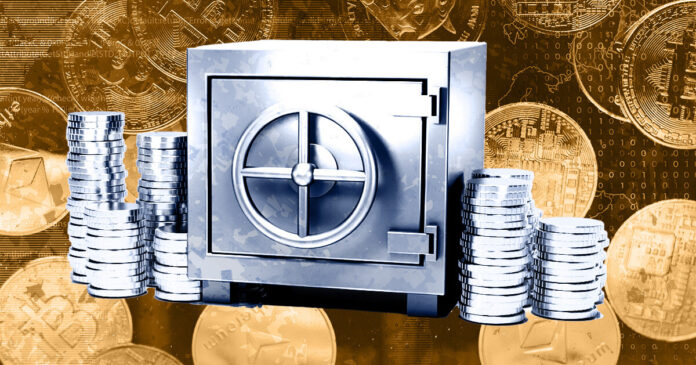In Nov 2022, the world experienced the sudden fall of one of the largest crypto exchanges in the crypto sphere. FTX mainly faced a liquidity crisis, and its founder and former CEO, Sam Bankman-Fried (SBF), was linked to the mayhem.
Consequently, the incident that happened in a matter of days impacted the entire crypto market’s volatility, dropping its value below $1 trillion. Above all, FTX investors and customers felt duped, and many others in the crypto space are more skeptical about crypto investments and fear similar repercussions.
However, this is not the first case: other crypto giants such as Celsius and Voyager follow a similar path, from halting customer withdrawal and filing for Chapter 11 bankruptcy to mishandling their customers’ funds. So, should users keep crypto in exchanges’ wallets? I believe investors/users ought to rethink the safety of their digital assets.
3 Best Crypto Investment Practices to Safeguard Digital Assets
As outlined above, the fall of the FTX crypto exchange has triggered many investors to reconsider their overall approach to investments. Now, they’re concerned about taking necessary measures to keep control of their assets and protect them from fraud, hacks, or misappropriation, as witnessed before. These measures include:
Transfer of assets to a hardware wallet
The phrase “Not your keys, not your coins” is frequently used in crypto. It simply means that one has no control over their coins if another party holds and keeps them secure on their behalf. In this case, if an investor decides to store their digital assets in an exchange-hosted wallet, the exchange controls their private keys. What’s a viable and safer alternative?
I strongly recommend that users transfer their assets to hardware wallets. It allows investors to have total ownership over their crypto wallets’ keys. Therefore, only the owner can access the assets in the wallet. In addition, there is minimal risk of losing funds to fraud or hacks.
However, it’s worth noting that a hardware wallet is as safe as its user. Therefore, the fewer people who know about your wallet, the safer it is.
Consider self-custody of assets
Using custodial wallets is a user-friendly solution because individual users don’t have to stress managing their private keys: a crypto exchange takes responsibility instead. However, it creates some risk to the same users if the exchange is hacked. Besides, an exchange could deny its users access to their tokens, as previously witnessed by several crypto firms in 2022.
On the other hand, with a non-custodial wallet, a user has control of assets because they have full custody at all times. Therefore, users are not subject to restrictions like in the case of custodial wallets.
While self-custody is a great way to safeguard digital assets, it comes with a significant responsibility to users of managing private keys. If your wallet’s private keys are lost, you lose your assets. Therefore, as a user, I would pay attention to proper password management and safe online security practices while using a non-custodial wallet.
Conduct proper research on an exchange’s PoR
“Don’t Trust, Verify” is one of the common phrases on Bitcoin Twitter among crypto enthusiasts and the community. As a crypto supporter, I believe this phrase is still one of the crypto’s core mantras. It means trust is essential even when dealing with crypto exchanges.
As seen in the recent crypto crashes linked to players such as FTX, Celsius, Terraform Labs, and Voyager, the break of investors’ trust by the exchanges was a common trend. It’s high time investors conduct proper research on an exchange’s proof of reserve (PoR) to ensure that a particular firm has enough assets to cover its clients’ balances.
Consequently, popular crypto exchanges have understood the need for PoR: currently, it’s more of an emerging trust standard. Thus, we’ve recently witnessed the publication of PoR by various exchanges to help their respective customers/users verify the state of their funds and deposits.
Final Thoughts
As seen from the recent events in the crypto industry, one needs to be cautious of how and where one stores digital assets. Holding or keeping assets in a hardware or non-custodial wallet and conducting proper research on an exchange’s POR are some of the best ways to safeguard crypto assets. While these practices may not necessarily protect an asset’s value, they offer protection against possible restrictions and grant complete ownership over one’s assets.
However, suppose a user finds it expensive or complex to use a hardware wallet or self-custody as an alternative for safeguarding crypto assets. In that case, they should consider using regulated crypto exchanges with a high level of transparency and a good reputation in the industry.
Credit: Source link























 Bitcoin
Bitcoin  Ethereum
Ethereum  XRP
XRP  Tether
Tether  Solana
Solana  USDC
USDC  Dogecoin
Dogecoin  Cardano
Cardano  Lido Staked Ether
Lido Staked Ether  TRON
TRON  Wrapped Bitcoin
Wrapped Bitcoin  Wrapped stETH
Wrapped stETH  Chainlink
Chainlink  Avalanche
Avalanche  Sui
Sui  Stellar
Stellar  Litecoin
Litecoin  Toncoin
Toncoin  Shiba Inu
Shiba Inu  Hedera
Hedera  LEO Token
LEO Token  USDS
USDS  Hyperliquid
Hyperliquid  Polkadot
Polkadot  WETH
WETH  MANTRA
MANTRA  Bitcoin Cash
Bitcoin Cash  Bitget Token
Bitget Token  Ethena USDe
Ethena USDe  Wrapped eETH
Wrapped eETH  Uniswap
Uniswap  Monero
Monero  NEAR Protocol
NEAR Protocol  Pepe
Pepe  WhiteBIT Coin
WhiteBIT Coin  Aave
Aave  Ondo
Ondo  Bittensor
Bittensor  Aptos
Aptos  Internet Computer
Internet Computer  Dai
Dai  Official Trump
Official Trump  Mantle
Mantle  Ethereum Classic
Ethereum Classic  Tokenize Xchange
Tokenize Xchange  OKB
OKB  Gate
Gate  sUSDS
sUSDS  Coinbase Wrapped BTC
Coinbase Wrapped BTC 
